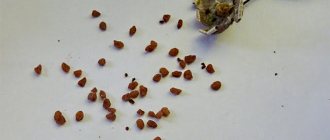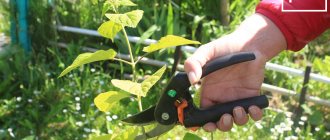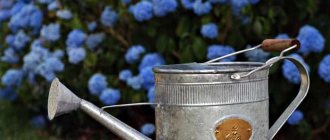Category: For flowers and indoor plants Reading time: 8 min · Views: 7,824
Ficus is a tropical plant that was loved by Russian gardeners a hundred years ago. This beautiful ornamental bush needs warmth, moisture and special fertilizers. What should the ficus be fed so that it does not turn yellow and drop its leaves? It turns out that the secret lies in the correct proportion of minerals and vitamins. In this article we will consider the technology of growing ficus in an apartment.
Why feed ficus
The plant needs adequate nutrition. These flowers are not often replanted, so the content of nutrients in the soil is depleted. Quickly using up the reserves available in the soil, the tree begins to experience a lack of minerals and trace elements.
With good care and feeding, a new leaf appears every week. If the conditions in the apartment coincide with the conditions of the tropical forest, the plant may even bloom.
Which component is missing for full development can be determined by the appearance of the flower:
- stopping growth indicates a lack of nitrogen in the soil;
- deformation and excessive stretching of branches is a sign of phosphorus deficiency;
- iron deficiency contributes to the appearance of pigmentation on leaves;
- faded leaf color - lack of potassium and calcium.
Important! Adding fertilizers to the soil will help restore the appearance and prevent the death of the flower.
Care measures
Knowledge of how to plant ficus benjamina at home is not enough to grow a gorgeous flower.
It is important to properly care for plantings, creating the conditions necessary for development:
- Lighting. Ficus “loves” places with indirect light. You can place it at a distance of 1 meter from the south window. In winter, the flower is provided with additional lighting, since if there is not enough light, the plant sheds its leaves.
- Temperature. In the summer season, its parameters should be from 18 to 23 °C.
- Air humidity. It needs to be increased by spraying the plant with warm water. Ficus should be placed away from heating radiators.
- Watering. Its frequency may vary depending on the time of year. The soil is not waterlogged. Watering is carried out in several stages until the entire earthen ball is saturated. Excess water is drained from the pan.
- Priming. Slightly acidic fertile soil is suitable for ficus. When preparing it yourself, take part of the turf and part of the sand and add a little coal. Drainage must be poured down.
How to plant Ficus Benjamin correctly has now become clear. If you follow these rules, the gardener will be able to grow a beautiful green bush. Ficus will become an original detail of any interior, decorating the space.
How to fertilize ficus - popular preparations
Specialized stores sell a large number of flower fertilizers. They can be both complex and intended only for ficuses. Effective drugs:
- Agricola . This is a universal remedy that is suitable for all types of ficus. It makes the color more saturated and has a positive effect on leaf growth. For 10 sticks you will need to pay 63 rubles.
- Flower heaven . This liquid fertilizer accelerates growth. It has no smell. Cost – 38 rubles. for 200 ml.
- Rainbow . The drug is produced on the basis of vermicompost. The main disadvantage is the rather pungent smell. Price – 69 rub. for 500 ml of solution.
- Bona Forme . This feeding is intended for ficus and palm trees. It is suitable for both root and foliar feeding. Active components improve the appearance of the plant. For 285 ml you will need to pay 100 rubles.
Any diluted composition should be used immediately. They cannot be stored.
Mineral fertilizers
Industrially produced preparations are used as mineral supplements. They can be produced in this form:
- powders;
- pills;
- liquid solutions;
- granules;
- long-acting sticks.
Reference! It is more convenient to use liquid fertilizers.
For proper nutrition, the flower will need 13 micro- and macroelements. It is difficult to provide him with all the necessary substances. This complex feeding is used only in specialized greenhouses. You cannot buy such drugs in every store.
Usually, at home, we limit ourselves to adding the basic elements necessary for the life of a flower. Fertilizer composition:
- nitrogen is the “building material” for the growth and development of foliage and shoots;
- phosphorus - improves decorative qualities, provides rich leaf color;
- potassium - strengthens the immune system, protects against the negative effects of the environment and various infections;
- calcium - facilitates the delivery of nutrients to plant cells.
Feeding frequency
The frequency of fertilization is low. However, the feeding itself is usually abundant in volume. If the ficus is large, it requires a lot of nutrients and vitamins, because the earth is quickly depleted. A transplant in this case is a bad option. It is much better to feed the plant once again with complex fertilizer.
If the ficus experiences a nutritional deficiency, it sends specific signals:
- Stops growth and development.
- Its stems lengthen and become thinner.
- Spots appear on the leaves, they begin to dry out and fall off.
- Gets sick (due to decreased immunity due to fasting).
- Experiencing attack from pests and diseases.
Note. If the plant suddenly becomes ill, feeding is postponed. After all, the ficus will not be able to absorb all the nutrients until it fully recovers.
After transplantation, fertilizers can be applied only after 3-4 weeks. At first, the rhizomes will find nutrition in the new soil, and the applied fertilizers can easily burn it.
Organic fertilizers for Benjamin and other varieties
For successful maintenance of ficus, organic fertilizers are no less important. They improve the structure of the soil and enrich it with useful elements. Thanks to such additives, the air permeability of the soil increases, which has a positive effect on flower growth.
The category of organic fertilizers includes:
- peat;
- compost;
- humus;
- bird droppings.
Important! Some organic fertilizers have a specific unpleasant odor.
When applying a solution of high concentration, they can destroy the flower. Organic mixtures from specialty stores can be a worthy alternative.
Nettle infusion
The folk remedy allows you to saturate the soil with nitrogen, iron and carbon. This is one of the best ways to feed indoor flowers. It is often also used to mulch the soil.
To prepare the solution, you need to do the following:
- Collect nettle shoots that have not yet formed seeds.
- Grind, pour into a container (the shoots should fill it halfway).
- Cover with a lid and place in a dark place.
- Leave for 2-3 weeks.
- Dilute the resulting composition with water 1 to 10 and water the flower.
- A solution with a concentration of 1 to 20 can be used for spraying.
Reference! The readiness of the infusion is indicated by the dark green color and the presence of bubbles on the surface.
Vegetable humus
This type of fertilizer is easy to make yourself. To do this you will need a variety of plants and foliage. Rotten plants are a supplier of nitrogen and many other microelements that are useful for indoor flowers. The resulting humus is diluted in water in a ratio of 1:10 and watered over the tree.
Humus (chicken droppings and mullein)
The classic version of organics is chicken manure or koryak. These are sources of nitrogen, which is needed for leaf growth.
Chicken manure is concentrated organic matter. It is not used in its pure form.
This product is applied in the spring and summer when active growth is observed. It is recommended to take 5 g of rotted droppings per 1 liter of water. The result is a cloudy liquid with a pale green hue. It should be applied only after abundant watering.
Cattle manure is composted before use. Fresh fertilizer can burn the root system. For 1 g of organic matter, take 1 liter of water.
Wood ash
The ash can be used as a dry fertilizer, sprinkled under the roots of the ficus, or prepared as a liquid solution. To do this, pour 1 tablespoon of wood ash with a liter of boiling water. The slurry is infused for seven days. Water the plant with the resulting mixture and spray the foliage.
Important! While the solution is infused, it must be shaken daily.
With the help of ash, the plant receives several useful substances at once:
- nitrogen;
- phosphorus;
- potassium.
succinic acid
Succinic acid can be purchased at a pharmacy. One tablet is diluted in 1 tbsp. l. water. Such a remedy:
- activates the growth process;
- increases the turnover of the immune system and resistance to diseases.
For preventive purposes, a solution of succinic acid is used to spray ficus.
Spilled tea and coffee
The grounds remaining after drinking black tea or coffee will serve as an excellent fertilizer for ficus, enriching the soil with oxygen. The remains of coffee or tea leaves are poured into the pot and lightly covered with earth. It is impossible to leave fertilizer on the surface, as it contributes to the appearance of midges and mold.
Important! It is unacceptable to use fresh coffee or tea as fertilizer. A high concentration of nitrogen will destroy the roots and cause the death of the plant.
Fruits and sugar
Sugar will give the plant a boost of energy. It can be used by adding it to the soil, or as a liquid solution. For this, 1 tbsp. A spoonful of sugar is diluted in a liter of water and watered over the ficus.
Fruits provide the soil with many beneficial substances that have a beneficial effect on plant nutrition. The following is used as fertilizing:
- citrus peels;
- banana peel;
- a decoction in which fruits were boiled.
The most effective and popular is an infusion made from banana peels. To prepare it you need:
- Grind the peel.
- Pour boiling water over it.
- Leave for 24 hours.
- Strain.
The infusion is used to water the plant no more than once every 2 months.
Reference! It is permissible to bury fresh banana peelings in the pot.
Yeast
The product is used to feed the flower during the period of active growth. 1 tablespoon of dry yeast is dissolved in 10 liters of warm water and used for watering. Yeast activates the activity of microorganisms contained in the soil.
Not all fertilizers are suitable for ficus. Some will not only be ineffective, but also unsafe. These include: Potassium permanganate . This product can burn the plant. Sweet water . Sugar diluted in water will cause midges to appear.
Watering
Due to the reduced temperature in winter, ficus is especially attached to heat. This issue can be partly resolved by making the watering warm. The optimal water temperature is 30-40 degrees. Regular watering will warm the soil, reducing the risk of the plant freezing.
A common mistake gardeners make is over-watering. Many people believe that ficus requires frequent irrigation in winter, but this is not true. Every living organism slows down its internal processes in winter and goes into a kind of hibernation. Ficus is no exception. Therefore, it simply will not have time to react to the intense supply of moisture. Only when the soil at a shallow depth is really dry is it worth watering the plant.
Answers on questions
How to feed a ficus if the leaves turn yellow and fall off? Feed in summer
plant once a month; in winter it is better to neglect the procedure.
be fed
during the period of active growth, from spring to autumn. Mineral and organic fertilizers are added to the soil with water.
How to feed ficus in spring and summer
Ficus plants need to be fed in spring and summer due to the active growing season of the plant during this period. It is necessary to help the flower grow green mass and gain a foothold in the soil. To do this, you need to enrich the soil with nitrogen. Both organic and mineral fertilizers are suitable, but it is better to alternate them rather than apply them at the same time.
How to feed ficus in autumn and winter
In winter, when daylight hours are shortened, the plant's growing season stops, so there is no need for frequent feeding. You can only periodically water the flower with a low-concentrated nitrogen fertilizer, but only if the ficus grows in conditions close to summer - a certain humidity level, warm air, an additional light source.
How to feed a ficus if it drops its leaves on its own
If the leaf drop is not caused by disease or pests, the cause may be soil depletion. The plant cannot obtain all the components necessary for life. As a result, the foliage loses turgor and falls off, and the crop may even die.
Important! To return the flower to its former beauty, you need to replace some of the soil in the pot with fresher one. To increase plant resistance, the preparations Epin or Zircon are used. The leaves are wiped with a liquid solution.
How to feed ficus for growth
To
improve
growth
feed
the ficus with solutions of organic fertilizers in the form of bird droppings and animal waste products. Animal humus is a classic organic matter, which is the most effective of its kind among nitrogen fertilizers for plant crops.
Also ficus
You can
feed it
with regular baker's yeast.
They contain quite a lot of nitrogen and serve not only as a fertilizer, but also as a growth
. Used for watering at the root and spraying the above-ground part.
What to feed to make leaves thicker
To increase the density of the crown, it is recommended to use succinic acid. These are colorless crystals that dissolve in water. The ficus is watered with a liquid mixture or the crown is sprayed.
Succinic acid prevents the shedding of leaves and their withering, strengthens the roots of the plant, and stimulates the development of the crown. To prepare the solution, mix 1 g of acid and 1 liter of water. Add to the root for three days. The procedure is carried out once a year.
Watering
Ficus does not tolerate both excess and lack of moisture, so one of the basic rules for caring for the plant is regular but moderate watering. How do you know when it’s time to moisten the soil? Check the substrate with your finger, and if it has dried to a depth of 2-3 cm, then irrigate it. For large specimens, it is permissible for the soil to dry out to a depth of 6-9 cm. It is necessary to moisten the soil so that liquid appears in the pan.
But before watering your ficus at home, make sure you use filtered and settled water. Moreover, it is desirable that its temperature be two to three degrees above room temperature.
Occasionally add a little milk to the water. From this, the ficus leaves will acquire a rich shade and a pronounced glossy shine. And always pour out excess liquid from the tray, otherwise the roots of the plant will rot.
Methods of application
The plant is fed by root and non-root methods.
- The first contributes to the normal development of the root system.
- Foliar foliar helps strengthen the plant’s immunity and protect it from the development of diseases.
Root
Root feeding is carried out at the stage of soil preparation and planting. The selected product is poured directly under the root. This technique activates the development of the root system, stem and leaves of the plant. For this, wood ash infused in boiling water or liquid mineral complexes are most often used.
Foliar
- Foliar feeding can be carried out by “dusting” the plant. This procedure helps get rid of pests and diseases.
- The second option for foliar fertilizer is exposure through the soil. In this way, you need to apply drugs during the period of active growth - from spring to mid-autumn. The nutrient mixture is applied to moist soil.
How to distinguish overflow from overdrying
Inexperienced gardeners cannot always understand whether the ficus suffers from excess or lack of moisture. In both cases, the plant looks depressed, the leaves lose turgor, change color and fall off.
How often do you water your ficus benjamina? Once a week 43.28%
1-2 times a week 25.65%
As the substrate dries 31.06%
With excess moisture, the leaves droop and lose their elasticity, as during overwatering, but it is not the edges that turn brown, but the tips of the plates, and soft areas appear on them. Leaves fall regardless of the tier - from below and from above at the same time.
The main sign of overwatering of a ficus is soggy brown roots. The earthen lump does not smell of freshness, but of a swamp.
The following difficulties may arise:
- The plant is clearly suffering from dryness, but when watering, the water remains in the pot. This happens when the surface is covered with a crust due to poor substrate or its salinity. To correct the situation, the top layer needs to be loosened, or even better, replaced.
- After drying out, the owners begin to water the ficus frequently, but it still shows signs of moisture deficiency. Even if moisturizing is done several times a day. The reason is that the soil has dried out so much that it has moved away from the walls of the pot. Water is not absorbed into the substrate, but immediately slips into the pan. It is necessary to do watering using the immersion method.











